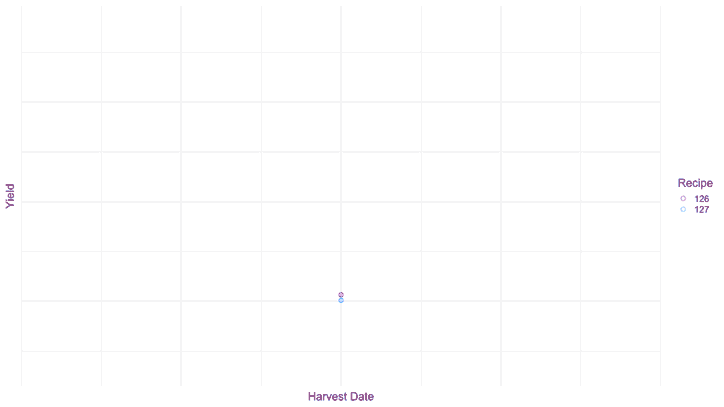More than most of us are aware, artificial intelligence (AI) has existed in our world for quite some time. Artificial intelligence is already in use if you've ever used Siri, asked Alexa to turn out the lights, or had Netflix suggest a movie to you. Even though autonomous driving gets the most of the attention in the AI world, this technology has become integral to how our digital lives are structured.
At Bowery, artificial intelligence (AI) is one of the essential elements assisting us in scaling up our solutions for global issues including food shortages and resource-inefficient agriculture.
The definition of artificial intelligence
The ability of a machine to engage in cognitive processes that are often associated with human minds, such as perception, reasoning, learning, communicating with the outside world, problem-solving, and even exercising creativity, is known as artificial intelligence (AI). Robotics, computer vision, and machine learning are some of the new technologies that allow AI to address issues in agriculture.
How might AI aid in more environmentally friendly farming?
AI is playing an increasingly important role in the agriculture sector's effort to feed the future sustainably in the face of climate change. This includes agricultural robotics, soil and crop monitoring, and predictive analytics. Thanks to computer vision, businesses like Blue River Technology are helping farmers in the field optimize their planting and herbicide use. Farmers are assisted by Trace Genomics in spotting early symptoms of disease in crops.
And while these are just a few instances of new technologies that enable smarter farming, the agricultural sector as a whole is utilizing AI to address some of the more pressing problems at hand, such as the excessive use of pesticides, the loss of biodiversity, and fractured supply chains.
How do the indoor vertical farms at Bowery employ AI?
At Bowery, our farmers cultivate their crops indoors, giving us advantages that are scalable and sustainable. Our farms, however, provide a difficult decision-making challenge since thousands of crops are growing concurrently, each with a unique set of environmental preferences. AI can help us continually enhance our growth processes, which is where it comes in.
At every Bowery farm, the BoweryOS acts as the brain, providing plants with specialized care at scale. It functions by gathering billions of data points through a vast network of sensors and cameras, which input into specialized machine-learning algorithms that are instantly translated by the BoweryOS.
This basically implies that the BoweryOS can recognize a grumpy arugula plant that wants more light while also informing our contemporary farmers to numerous trays of young butter lettuce that need to be harvested tomorrow. With each grow cycle, it becomes more intelligent, learning more about the circumstances each crop really requires to thrive.
Using BoweryOS to get the proper "crop recipe"
Let's dissect that final point. At Bowery, we refer to "crop recipes" as the environmental conditions that plants require to thrive. Traditionally, the ingredients in a farmer's recipe would include things like seeds, fertilizer, the time of year when the crop is harvested, and the location of the farm itself.
Spectra of light, photoperiod (day/night cycles), intensity of light, watering schedules, nutrients, ventilation, temperature, humidity, and CO2 are just a few of the granular aspects that can be taken into account indoors without the usual outdoor weather conditions. These variables are under the control of our farmers, who may change them hourly or even minutely to maximize plant health and, ultimately, flavor.
 |
| Example of the various recipes being tested for one crop over time. |
What is the ideal "recipe" for a crop to prosper, then? Machine learning algorithms are looking for this solution all the time. The BoweryOS uses past information accumulated from thousands of cycles of growth for each crop cultivated at a Bowery farm, and it continuously modifies growing circumstances to narrow down on the most productive setting. The "recipes" that have the highest success rates—i.e., the healthiest plants and crop yields—are then improved upon and scaled automatically throughout our farms.
Using AI in this way enables Bowery farmers to test, iterate, and scale scientific research at a rate previously unattainable in agriculture. The number of farms we have and the ensuing volume of data we gather are more important to our capacity to learn than the size of our R&D team.
AI Opens Doors to Scale and Efficiency
AI is aiming to make our entire business smarter while also enhancing each crop's formula. To guarantee that clean water is used effectively across the farm, it integrates with our AgTech systems. AI also aids in the management of our energy usage, an area at Bowery where improvements are constantly being made and a prime location for sustainability.
Even though AI is a topic that is frequently unknowledgeable and misunderstood, it is crucial to spread awareness of all the benefits it is having on society and the agricultural sector. With an agriculture system that can feed a growing population, it is making humans smarter than ever before, from assisting an indoor farm in discovering a more sustainable crop recipe to assisting in early crop disease detection.
